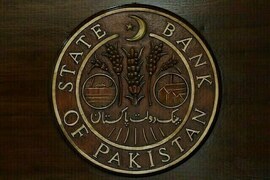 MUMBAI: India's benchmark 10-year bond yield hovered at more than 13-month highs as accelerating inflation reduced chances the central bank will cut interest rates at its next policy meeting.
MUMBAI: India's benchmark 10-year bond yield hovered at more than 13-month highs as accelerating inflation reduced chances the central bank will cut interest rates at its next policy meeting.
The 10-year bond yield went up as much as 7.07 percent, the highest since Sept. 15, 2016 and up 10 basis points so far from its previous close of 6.97 percent on Monday.
India's annual wholesale price inflation picked up in October to a six-month high, driven by faster rises in prices of food and fuel products. Retail inflation in the same month also climbed to 3.58 percent from a year earlier, a seven-month high.
Adding to the bearish sentiment was the Reserve Bank of India's recent open market bond sale announcement for 100 billion rupees ($1.53 billion) scheduled on Nov. 23.
"At a time when inflation is rising, market is already bearish, the OMO (open market operation) sale announcement shows that the RBI is completely fine with higher bond yields," said a trader at a foreign bank.
"When the regulator wants the government's borrowing cost to go up then who will have the courage to buy in this market where there is so much supply?"
In addition to the OMO sale, the government will also sell 150 billion rupees of bonds this Friday.
Traders expect yields to rise further as state-run banks, the usual buyers in the secondary market, sit on heavy losses.
The 10-year debt yield has risen by 56 basis points since the start of July as concerns over global rate tightening and upside risks to inflation at home surfaced.
State-run banks stayed away from the market on Tuesday.
"Why should we go and support the market when some segments in the market are spreading so much of negativity and making all the money and we are having to bear the losses,?" said a senior trader at a state-run bank.
"We will not buy now. We will wait and see how far the RBI and the government are willing to allow this pain to go on."
Concerns that the RBI is unlikely to tone down its hawkish tone at its policy review next month were heightened following renewed worries over fuel and food prices.
Uncertainty over the impact of a goods and services tax that went into effect in July on economic growth was also adding to traders' expectations the RBI will stay hawkish given the tightening bias of global central banks.






















Comments
Comments are closed.